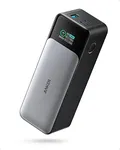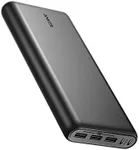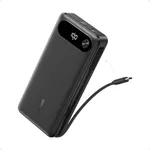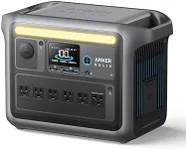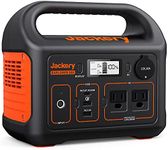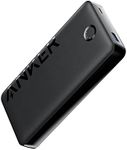Buying Guide for the Best Portable Chargers
Choosing the right portable charger, also known as a power bank, can make a big difference in how easily you keep your devices powered up on the go. The best fit for you depends on your daily habits, the devices you use, and how often you need to recharge away from a wall outlet. Understanding the key features will help you pick a charger that matches your needs, whether you want something lightweight for emergencies or a powerhouse for long trips.Capacity (mAh)Capacity, measured in milliampere-hours (mAh), tells you how much charge the portable charger can store. This is important because it determines how many times you can recharge your devices before the charger itself needs to be recharged. Lower capacities (around 3,000–5,000 mAh) are good for a single phone charge and are very compact, making them ideal for light, everyday use. Mid-range capacities (10,000–15,000 mAh) can charge a phone two to three times and are a good balance between size and power. High capacities (20,000 mAh and above) can charge multiple devices several times and are best for long trips or charging tablets and laptops. Think about how many devices you need to charge and how long you’ll be away from power to choose the right capacity.
Output Power (Wattage/Amperage)Output power, often shown in watts (W) or amperes (A), tells you how quickly the charger can deliver power to your device. This is important because higher output means faster charging. Basic chargers offer 1A output, which is fine for small phones or slow charging. 2A or higher is better for smartphones and tablets, while some chargers offer even higher outputs (like 2.4A or 3A) for fast charging or for larger devices. If you want to charge your device quickly or have a device that supports fast charging, look for a charger with higher output. Match the output to your device’s needs for the best experience.
Number and Type of PortsThe number and type of ports determine how many devices you can charge at once and what kinds of cables you can use. Some chargers have just one USB port, while others have multiple ports, including USB-A, USB-C, or even built-in cables. If you often need to charge more than one device at the same time, look for a charger with multiple ports. Also, check if the ports match your devices—USB-C is becoming more common for newer phones and tablets, while USB-A is still widely used. Choose a charger with the right mix of ports for your devices.
Size and WeightSize and weight affect how easy it is to carry the charger with you. Smaller, lighter chargers are easy to slip into a pocket or small bag, making them great for daily use or emergencies. Larger chargers with higher capacity are heavier and bulkier, but they can power your devices for much longer. Think about how you plan to carry the charger—if you want something for your pocket, go for a slim, lightweight model. If you don’t mind carrying extra weight for more power, a larger charger might be better.
Input Charging SpeedInput charging speed refers to how quickly the portable charger itself can be recharged. This is important if you need to refill the charger quickly between uses. Some chargers support fast input charging through USB-C or micro-USB, while others may take longer to recharge. If you often need to recharge your power bank in a hurry, look for one with fast input charging. Otherwise, standard input speeds may be enough for occasional use.
Safety FeaturesSafety features protect both your devices and the charger from problems like overheating, overcharging, or short circuits. Good chargers include built-in protections to prevent damage or accidents. This is important for peace of mind, especially if you plan to leave your devices charging unattended or use the charger frequently. Look for chargers that mention safety certifications or features like overcharge protection, temperature control, and short-circuit protection.


